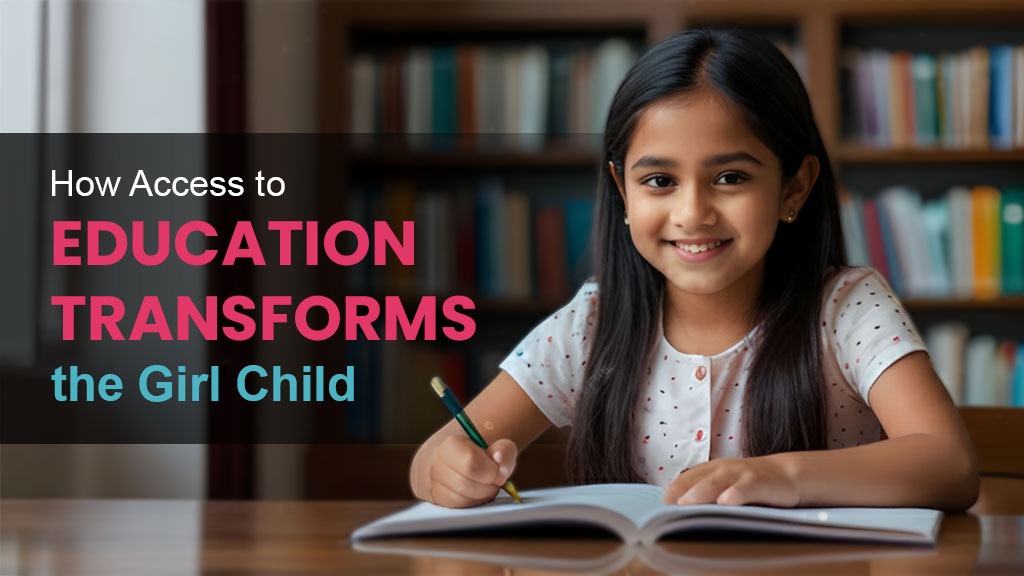
How Access to Education Transforms the Girl Child

Introduction
Education is a doorway to opportunity for the girl child. It does more than teach reading and arithmetic; it equips girls with confidence, life skills, and the ability to shape their own futures. Despite global progress, many girls still face obstacles that keep them out of school. The International Day of the Girl Child exists to focus attention on these barriers and to rally action for equal access to education.
The Transformative Benefits of Education
Building Confidence and Agency
When a girl spends years in school, she gains the ability to think critically, make choices, and voice her opinions. Education strengthens self-esteem and gives girls the tools to resist harmful practices like early marriage and exploitation. School environments that encourage participation and leadership help girls discover their potential and translate learning into action.
Healthier Families and Stronger Communities
Educated girls often delay marriage and childbirth, and they make healthier decisions for themselves and their children. Schooling raises awareness about nutrition, hygiene, and healthcare benefits that ripple outward across families and communities. Millions of girls remain out of school worldwide; closing that gap is a global priority.
Economic Independence and Opportunity
Access to education increases a girl’s chances of earning a steady income as an adult. Even foundational literacy and numeracy open doors to vocational training, digital skills, and entrepreneurship. When girls gain economic independence, families and local economies grow stronger and more resilient.
Barriers That Still Block the Path
Cultural and Social Barriers
In some communities, norms and expectations pressure girls to prioritise household responsibilities or early marriage over schooling. Shifting these norms requires outreach, role models, and the clear demonstration of education’s benefits for families.
Infrastructure and Safety Challenges
A lack of separate sanitation facilities, unsafe routes, and school environments where girls feel vulnerable can prevent regular attendance. Practical upgrades, private restrooms, secure transport, and trained staff make schools more accessible and welcoming.
Financial Constraints
For low-income families, the cost of uniforms, books, and transport can be decisive. Financial support programs, scholarships, and community sponsorships remove these barriers and help keep girls in class.
How Education Creates Lasting Change
Breaking the Cycle of Poverty
When girls complete schooling, their earnings often increase, and their children are more likely to attend school. This intergenerational effect is one of the strongest levers for long-term poverty reduction and social mobility.
Leadership and Civic Participation
Education prepares girls for leadership roles in classrooms, workplaces, and civic life. When girls learn to read, organize, and speak up, they are better positioned to influence policies that affect their communities.
Mental Well-Being and Social Growth
School provides social spaces where girls build friendships, resilience, and a sense of identity. These emotional and social gains are as important as academic outcomes in supporting lifelong wellbeing.
Practical Steps to Open More Doors
Government and Policy Actions
Policymakers must prioritise gender-responsive funding, build schools in remote areas, and remove direct and hidden costs of schooling. Policies that ensure safety, privacy, and teacher training are essential.
Community Initiatives and NGO Action
Local groups and NGOs can mobilise resources, identify at-risk students, and run mentoring programs. Festivals for Joy runs campaigns that support student education and protect girl-child welfare awareness.
How Individuals Can Help
- Sponsor a girl’s school supplies or scholarship.
- Volunteer as a mentor or tutor in local programs.
- Advocate for safe school infrastructure in your community.
- Share accurate information and support policies that keep girls in school.
Community Stories and Long-Term Vision
Community-level initiatives show how targeted support changes outcomes. Where adults were trained as tutors and clubs encouraged girls in science and sports, drop-out rates fell and self-confidence rose. Grassroots efforts prove that locally led interventions work.
Education for girls requires long-term strategies that combine access, gender-sensitive curriculum, health services, and employment pathways. Only a comprehensive approach will ensure today’s learners become tomorrow’s leaders.
Every classroom that opens to a girl is an investment in resilience, equity, and shared prosperity. Celebrating the International Day of the Girl Child should motivate us to act, invest, and listen. The combined efforts of Festivals for Joy, global institutions, and local champions will determine whether those doors remain open for the next generation. Support local programs, advocate for change, and help each girl reach her potential today.
